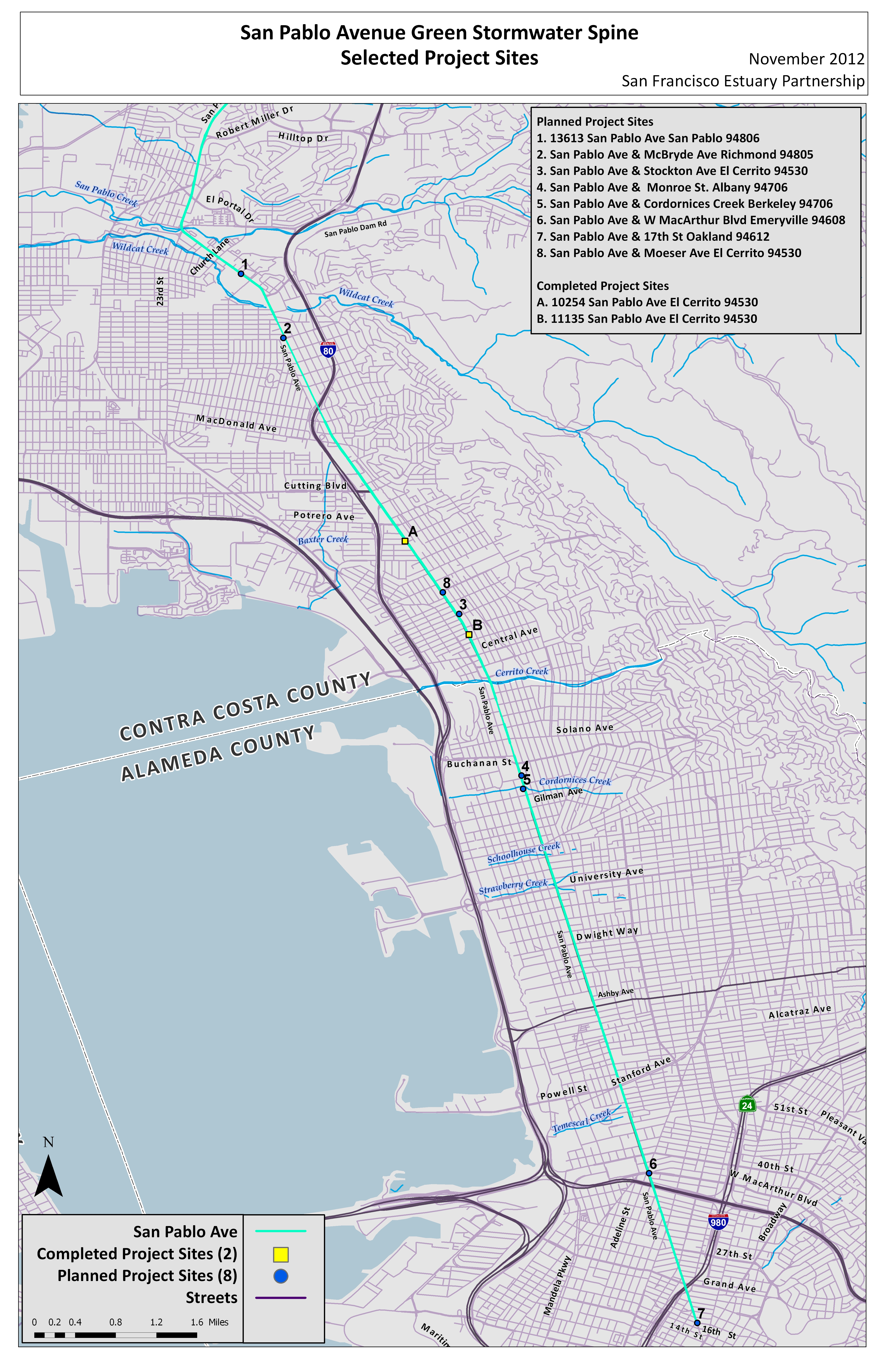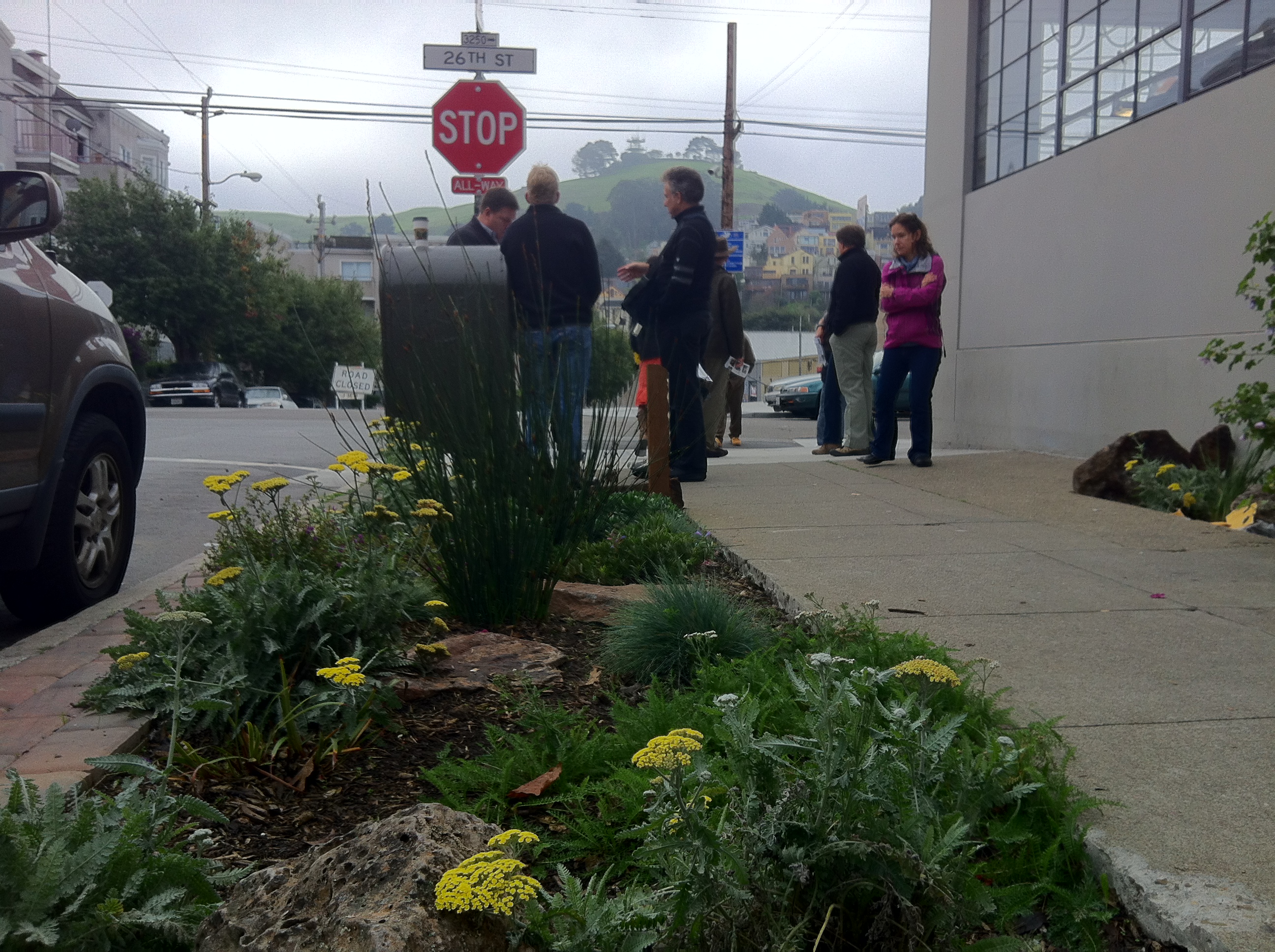San Pablo Avenue Green Stormwater Spine

This is a multi-year project with numerous components and partners. Each partnering city selected the project site location (see map above) within its jurisdiction. The Design Team, led by Wilsey-Ham, prepared construction documents based on schematic layouts reviewed and approved by city staff. Harris & Associates will provide Construction Management services during implementation. Gates & Associates is assessing the designs, construction process, and maintenance plans to score the sustainable practices of each site using Bay-Friendly Landscape Guidelines.
The San Francisco Estuary Institute is the lead in scientific monitoring to measure pollutant removal efficiency. Project funding provides for a 2-year plant establishment period (to maintain plantings, remove weeds, and ensure adequate irrigation), after which the cities will take on the long-term maintenance of their respective sites. SFEP is leading the project’s outreach elements, which includes creation of model municipal ordinance language for Bay Area cities to consider adopting when planning future street improvements.

FUNDERS
California Department of Water Resources
California Department of Transportation
California Natural Resources Agency
US Environmental Protection Agency
THIS PROJECT ADVANCES THE FOLLOWING ESTUARY BLUEPRINT GOALS AND ACTIONS
Goals
Resiliency
Water Quality and Quantity
Actions
Action 24
Action 27
Current Status
All project designs are complete and a contractor has been awarded the construction bid. During exploratory potholing in December of 2016, numerous underground utility conflicts were discovered. The project team is developing a strategy to avoid these conflicts where possible and to create a cooperative work plan with the utility companies in the hopes of starting construction in the fall of 2019.
Beyond the installation of these innovative site-specific projects, the goals of this project are to:
- Help quantify the Bay Area cost and benefits of LID retrofits in the right-of-way
- Educate the public and local governmental decision makers about green infrastructure
- Demonstrate sustainability practices by using Bay-Friendly Landscape Guidelines
- Provide local public works agencies with hands-on opportunities to learn best management practices for green infrastructure
What is Low-Impact Development (LID)?
Low-impact development (LID), also known as Green (Stormwater) Infrastructure, is a stormwater management approach designed to mimic natural (pre-development) hydrology. LID emphasizes use of pervious surfaces, plants, and soils to filter contaminants from runoff. Urban runoff is a major source of water pollution in the Bay Area. It often carries heavy metals, pesticides, fertilizers, pet waste, automotive fluids, and other toxic chemicals to local creeks and the Bay. LID measures can also reduce the velocity and volume of stormwater run-off, while adding aesthetic benefits to the community.
